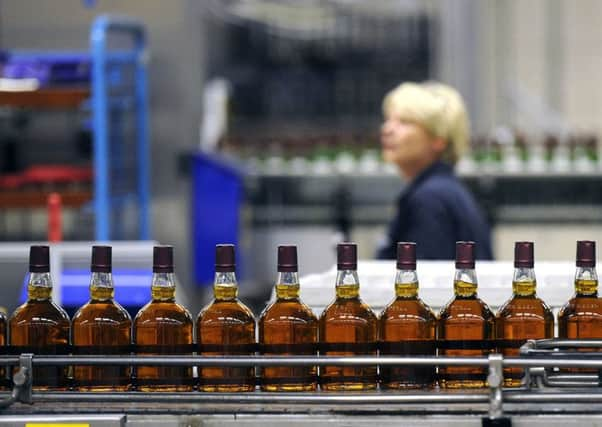Couple take legal action against Diageo over '˜whisky fungus'


Thomas and Gail Chalmers want drinks giant Diageo to install “abatement technology” as they claim their home in Bonnybridge, Stirlingshire, has been stained black by the Baudoinia compniacensis fungus, a by-product of the whisky maturation process. The couple’s home is near warehouses belonging to the firm.
Mr and Mrs Chalmers say the “whisky fungus” experiences accelerated growth when exposed to ethanol vapours – commonly known as the “angels’ share” – causing anything outdoors in the surrounding area to be coated with a black mould and have requested Diageo install a “thermal oxidiser” in their maturation sheds to stop the fungus flourishing.
Advertisement
Hide AdAdvertisement
Hide AdHowever, despite the Court of Session ruling the distillers do have a case to answer, Diageo denies the mould is the cause of blackening buildings.
David Short, of Balfour and Manson, leading the action for the claimants, called on Diageo to be “good neighbours,” and admit the mistake.
He said: “I am pleased the court considers the evidence produced in support of the case is sufficient to allow a full hearing of all of the evidence.
“This includes scientific evidence comprising of DNA test results which conclude, without doubt, the cause of the fungal growth and subsequent blackening of the buildings is caused by ethanol released from buildings where whisky is matured.”
Residents of Saint Croix in the US Virgin Islands are also pursuing a class action lawsuit against Diageo, along with the manufacturers of Cruzan Rum, citing similar issues with the fungus. Bourbon makers in Kentucky are also embroiled in a long-running battle with residents of the town of Shively over the spread of the mould.
It is thought the installation of a thermal oxidiser in warehouses where whisky barrels mature would help decompose the fungus before it spreads, however the whisky industry has remained steadfast in its belief that whisky production is not the cause of blackening buildings.
The industry body, the Scotch Whisky Association, said it had found “complex combinations of naturally-occurring microflora” in its own independent research and concluded there was “no causal link” between whisky production and the spread of Baudoinia.
A spokesperson for the drinks producer said: “We strongly dispute the claims made against Diageo.”
Advertisement
Hide AdAdvertisement
Hide Ad“We care deeply about the long-standing relationships we have built with our neighbours and are sympathetic to the concern raised about exterior blackening of some buildings. However, exterior blackening visibly exists across many structures in Scotland, including where there are no whisky warehouses, and it is therefore very difficult to say that it is caused by any single environmental factor.”